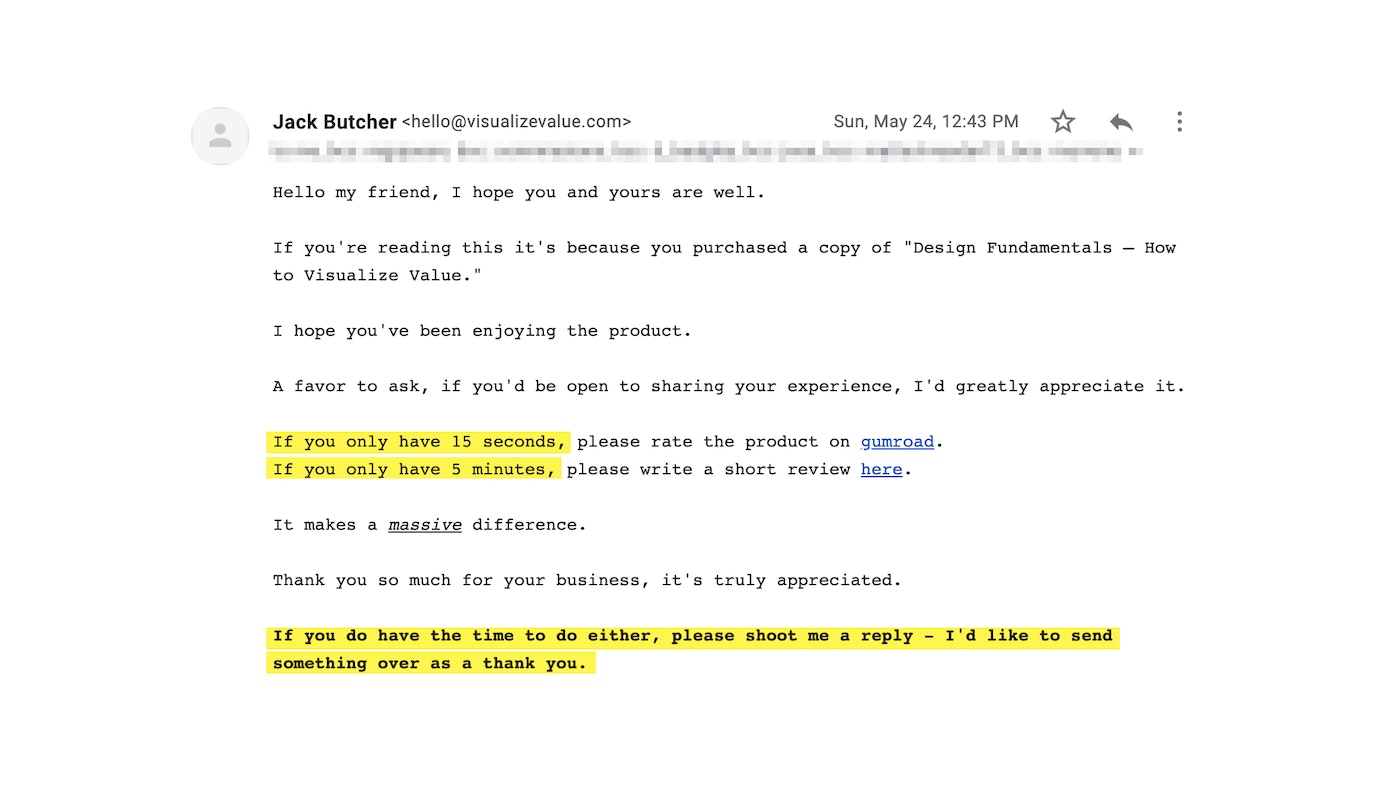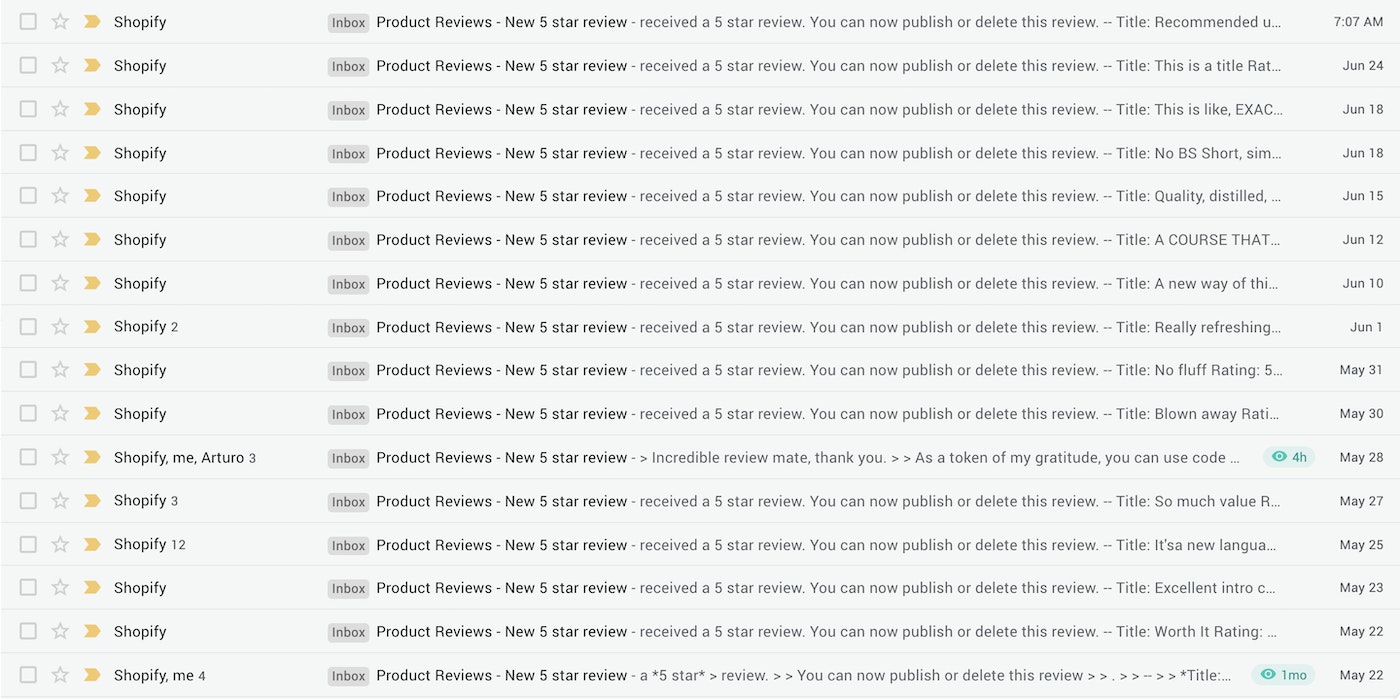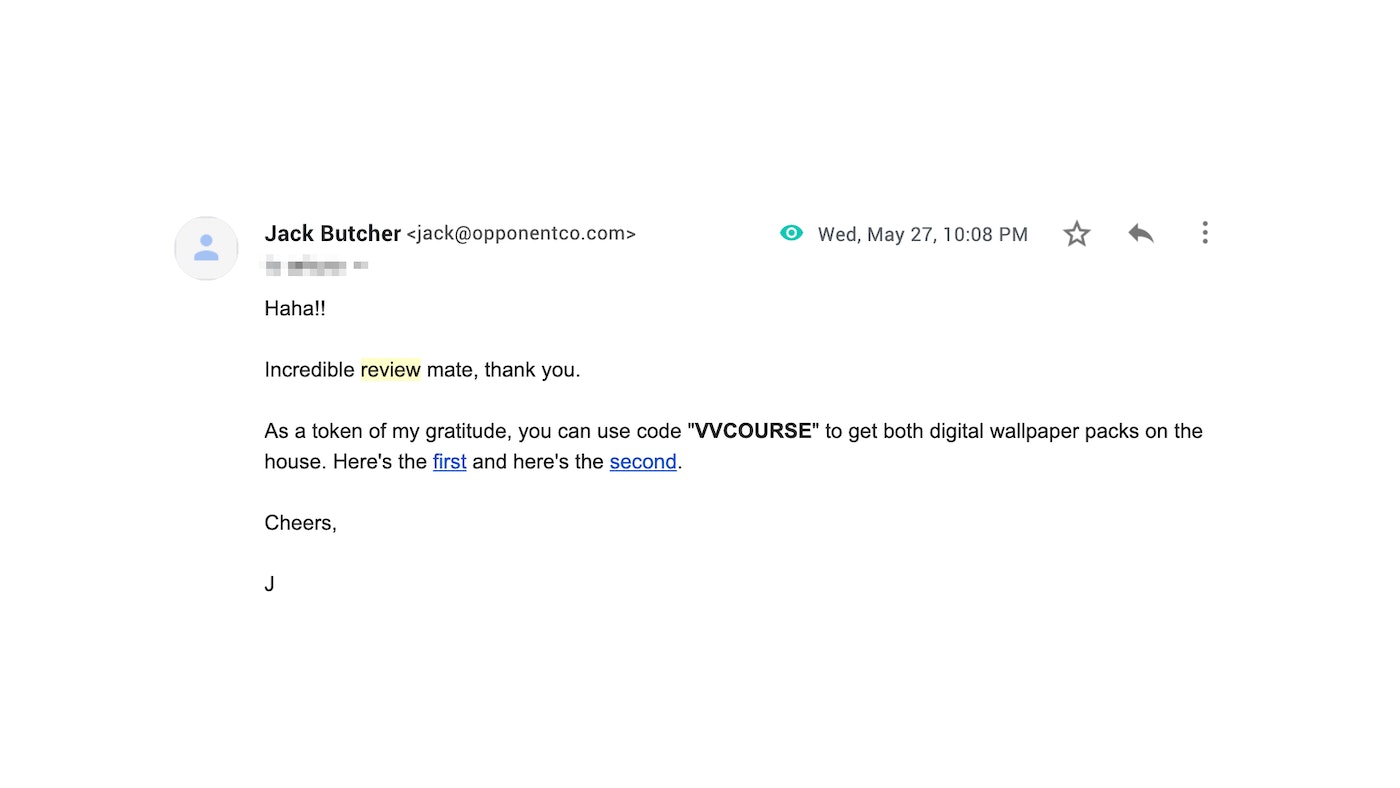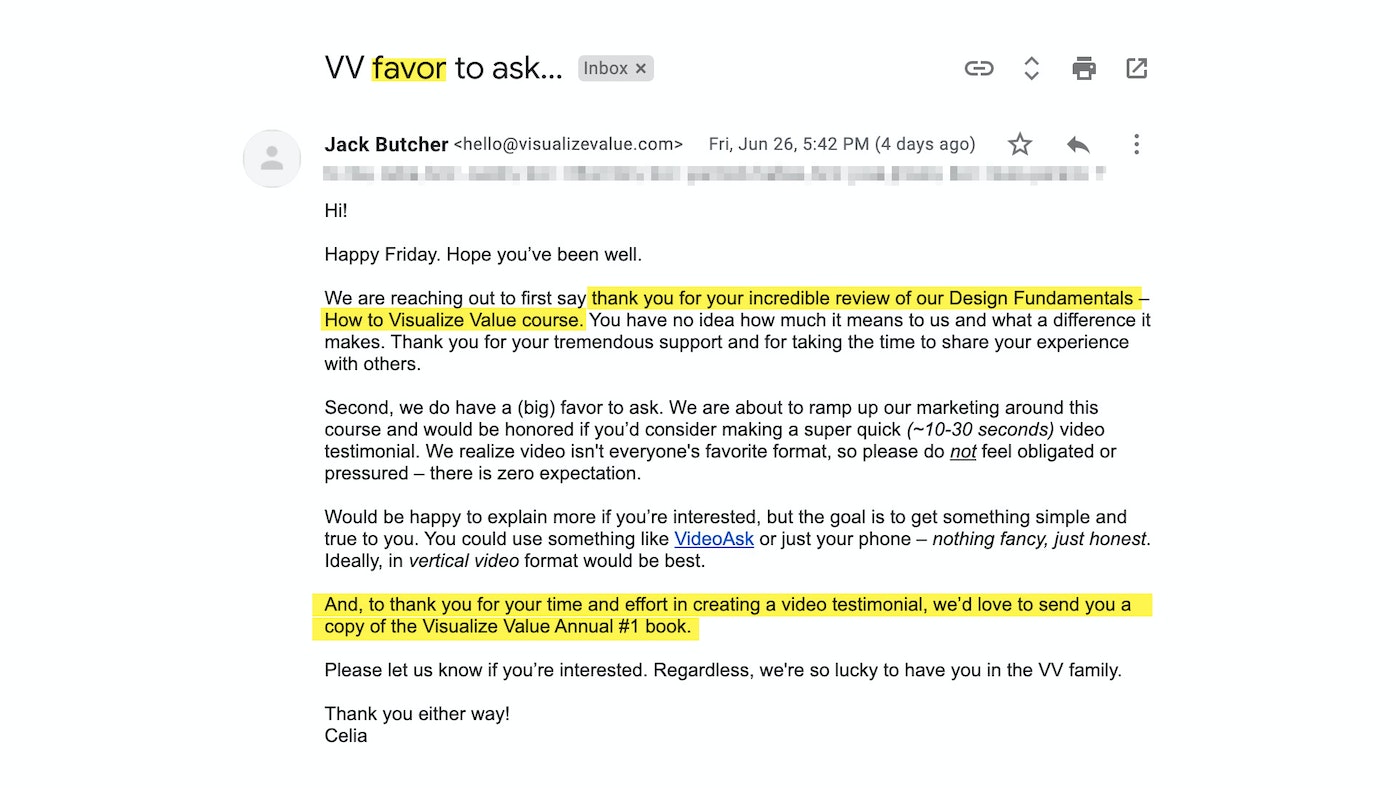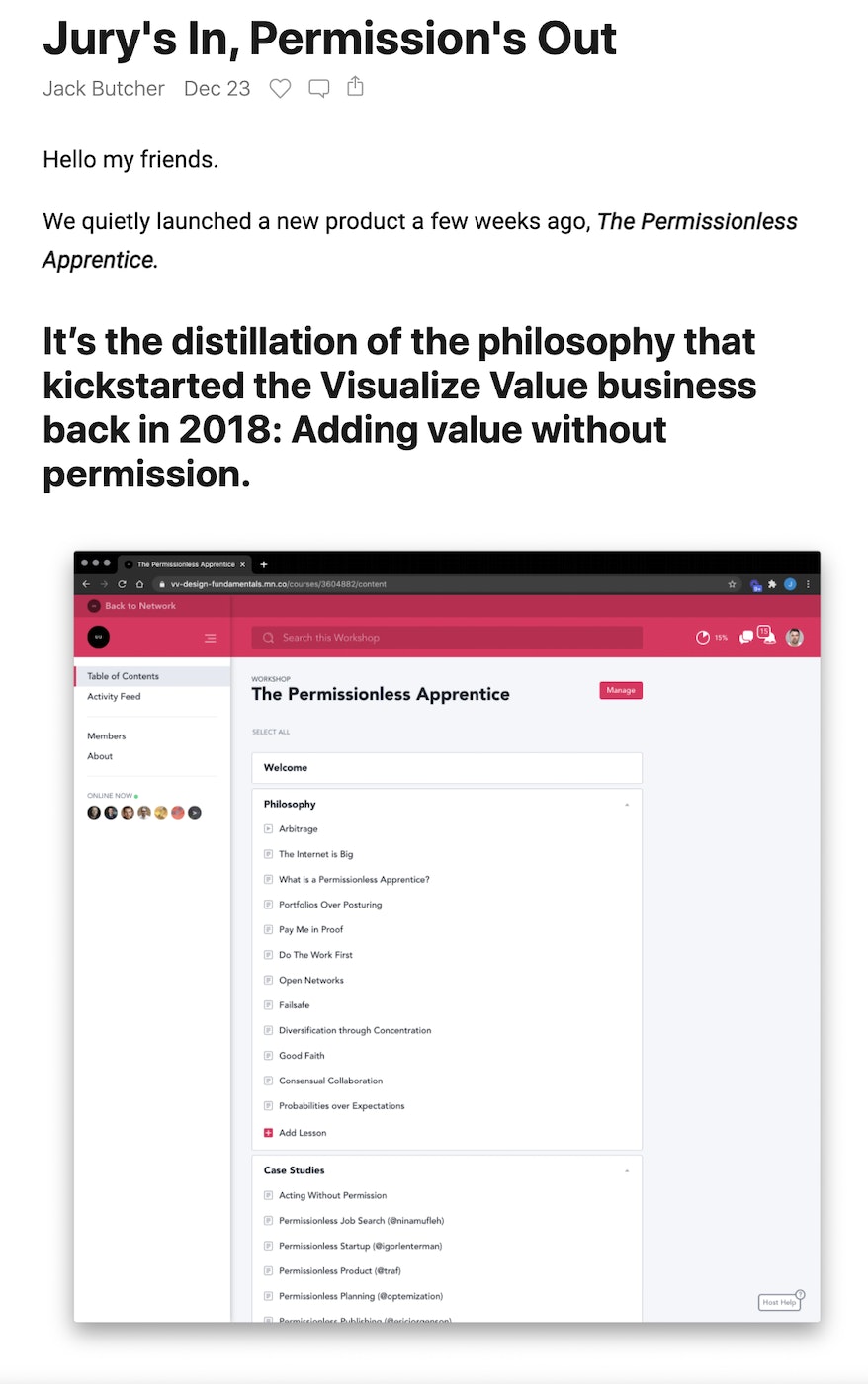The Proof & Price Loop
Give it away until you have enough proof to sell it.
1. Get proof.
- Get paid.
- Get more proof.
- Get paid more.
Proof Loops: A strategy that has been instrumental in balancing the growth of sales and customer loyalty.
Extracting Proof
Let your customers do your marketing.
People trust other people, so your ability to get people to endorse your product will be a strong influence over your ability to sell.
Asking for Proof
Set up timed sequence to follow up with buyers of your products to ask them for their honest feedback.
Recognise that people are busy.
Respect their time by making a clear ask, and offering something in return.
If they got value from your product, they’ll leave you a nice review:
Follow up and say thank you, build deeper relationships.
Then, identify people who left a particularly glowing review, ask them an additional favor, and offer something even more valuable for their time.
Another example:
Rewarding your customers for acting quickly:
In launching another course designed specifically to get people to take action, we worked a thematic reward into an email (however, this would work on any platform):
Tee up the product, provide some visual reference.
Then, add some context and provide social proof:
(We manually reached out to beta testers to get early feedback)
Then (as demonstrated above) create an incentive to respond — this is a $49 course, not designed to be a huge profit center for us, but more of an on ramp to the VV curriculum in general.
Losing $24.50 on one purchase in exchange for a happy future customer and a solid review is an incredible investment for us:
24 hours later we have fifteen new 5 star reviews we can go back to the market with.
Justifying Your Prices
A simple rule of thumb for pricing products and services:
At this price point, can my customer get a 10x return on this investment?
If you really want to stress-test your products, try 100x.
Is a $19 PDF that helps people structure their day good for $1,900 of value over the course of a lifetime? Sure. If it helps someone land a new job, develop a new habit that keeps them healthy, pursue knowledge that increases the value of their business.
Can you build a $99 course that teaches the skills to make $10,000? Of course . Anything that increases earning power is a worthwhile investment.
Can you make a $499 curriculum that teaches principles that can be leveraged into $50,000 of income? If you implement what we’ve covered here, and divorce your time from your money, your ability to earn is no longer constrained by the hours in the day, but your ability to scale your reputation & network.
Can a $20,000 investment in precisely articulating the message of a business deliver $2,000,000 of new contracts/sales/growth? A single enterprise-scale engagement can net a 100x return on a $20,000 story. It happens every day.
Get paid for what you’ve already paid for
A lot of people with plenty to offer suffer from undercharging for their work.
“If it’s not costing me anything to sell, or I’m not turning up in person to deliver it, I feel uncomfortable charging more than $x.”
You’re forgetting three things:
It cost you a fortune to learn it. (You paid in time, which no one can reimburse you for.)
What you charge is a proclamation of how much you believe in your product. (And yourself.)
It’s more difficult to produce a product that can deliver a result without you. The variables that you must take into account to ensure your customer experiences the transformation you intend is a significant and challenging undertaking.
Assuring Victory
OK my friend.
In the words of the great Aristotle: “Tell them what you are going to tell them, tell them, then tell them what you told them.”
Here’s the part where I tell you what I told you:
You don’t need permission to prove yourself.
No one cares what you can do, everyone cares what you can do for them.
Your connection with the market is just as important as the quality of your product.
Figure out a way to be valuable first, then figure out a way to scale that value into a product that works without you.
You can create value by doing things that other people don’t want to do ($), won’t do ($$), or can’t do ($$$).
Build products and services that make people feel more confident, help them make a better living, and help them fix a specific problem.
Promote yourself by proving yourself.
If you do great work in public, you will eventually get what you deserve.
Not only that, but the very act of working in public will increase the quality of your output.
The better your work, the better your inbound clients, the more loyal your customers, and the stronger your network.
Get people interested, inundate them with value, charge 10x less than what your products are “worth” when implemented.
If you constantly deliver value, your reputation should always be worth more than the amount of capital you extract from the market at any given time - your long-term returns are assured if you create more value than you extract.
So What Now?
Lots of information, and an infinite number of possibilities of what to start working on.
Allow me to simplify your options:
Internet native products fall in two very simple categories:
Code, and media.
Both can be augmented by labor (a service component), or run largely independently.
You can write code to perform a task (or set of tasks).
Or you can create media to communicate something repeatedly.
We intentionally leave out a specific prescription as a next step (because that would defeat the entire purpose, and have you competing against your fellow students in a race to the bottom).
As we’ve highlighted in the modules above, this is a game of iteration — the Visualize Value business still operates in a mixture of the above categories.
We slowly transitioned to a more leveraged model by paying attention to the recurring problems we were solving as consultants, building distribution through social media, and automating fulfillment with software.
Make noise, listen for signal.
All of the principles in this course are designed to arm you with the perspective to spot and capitalize on opportunity, or to build new skills with these mental models already installed.
